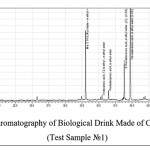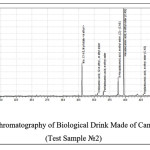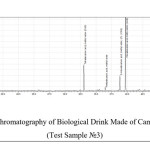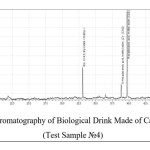Introduction
Over the past decades, the health status of the population indicates an increase in the number of people suffering from various diseases, such as diabetes mellitus, cardiovascular diseases, gastrointestinal disorders associated with nutritional disorders. The researches and observations in the field of health care showed that the food stuffs have not only nutritional properties, but also positive effect on the human organism functions. Including dairy products of special purpose, which are the most important and effective way to maintain human health.
In order to provide better supply of the population with the food products, including dairy products, corresponding to the up-to-date requirements of nutrition science, the search for new raw material resources is intensively conducted. In this connection, the task of scientific and practical substantiation of the possibility of camel milk use for expanding the raw material resources and creating products on the basis thereof complying with the rational nutrition requirements is absolutely relevant. Traditionally, the camel milk is consumed either in fresh form or in fermented form.1,2
The average fat content in camel’s milk is 3.92%. S.G. Kheraskov notes that the fat content of the camel milk varies within a rather wide range, depending on the breed, the season of the year, fodder, individual and other factors. Table 1 shows chemical composition of milk of different camel breeds.
Table 1: Chemical Composition of Camel Milk3
| Genotype of camels | Mass fraction, in% | Acidity, °Т | Density g/sm3 | ||||
| fat | protein | lactose | ash | dry matter | |||
| Dromedary | 4.47 | 3.50 | 4.95 | 0.70 | 13.62 | 16.5 | 1.031 |
| Bactrians | 5.39 | 3.80 | 5.10 | 0.69 | 14.98 | 17.5 | 1.033 |
| Nars | 5.14 | 3.69 | 5.08 | 0.77 | 14.68 | 15.5 | 1.032 |
| Kospaks | 5.15 | 3.70 | 5.15 | 0.77 | 14.70 | 15.0 | 1.032 |
As can be seen from the data provided in Table 1, all species of camels produce high-fat milk with large quantity of dry residue.
According to S.M. Terentyev the milk of Kazakh Bactrian camels has the average fat content of 5.2%, and seasonal fluctuations thereof are from 4.7 in the summer to 6.0 in winter period.
The fat percentage of the camel milk, just like the cow milk, decreases insignificantly towards the second month of lactation and then gradually increases again. In the winter cold months of the stall-feeding period, the content of fat in milk is the highest. Upon coming out to the pasture (at 13-15 months of lactation) during the hot season, the percentage of fat again decreases slightly.
Baimukanov investigated the productivity and quality of milk of seven breeds and hybrids of camels. According to his materials, the Bactrian camel milk contains more fat (6.12%), if to compare it with milk of other animal species – 4.03-4.63%.
In Mongolia, camel breeding occupies an important place in the national economy. The average fat content in the milk of the Mongolian Dromedary is 4.0%, and that of the Bactrian camels is 5.9%.
In the Arab countries, mainly Dromedary camels (Arabian one-hampered camels) are spread. They are considered as liquid-milk animals and they give milk with the average fat content of 3.2-3.8%.
JSC “Taushik” in Mangistau region has several thousand heads of camels, some of which are milked, and the company manufactures the first-class shubat. Six species and hybrids are bred in the farm, the fat content of its milk varies widely and is characterized by the following data (the message of the president of “Taushik” JSC T. Zholdybayev): Bactrian camel -4-8%; Dromedary camels-3.5-5.0%; Nar-Maya camels -4-7%; Kerdeli-Maya camels -3.34-4.0%; Aruana-Maya camels -3.1-3.8%; Zharbai-Maya camels-3.1-4.0%.3
The dairy products play the exceptional role in human rational nutrition. They serve as the important factor for prevention and treatment of various gastrointestinal and other diseases. Unlike milk, sour-milk drinks are well tolerated by patients suffering from lactose insufficiency and food allergy. The chemical composition of sour-milk drinks determines nutritional and dietary value thereof. Proteins, fats, milk sugar, mineral substances of fermented milk products are easily digested and utilized by the organism. In addition, they include many other biologically valuable substances. The biological activity of sour-milk drinks can vary within certain limits depending on source raw materials and the technology of manufacturing thereof. Sour-milk drinks have a number of useful properties conditioned by the vital activity of lactic acid bacteria and their antibiotic activity. Along with antibiotic properties, usefulness of amino-acid composition of proteins of fermented milk products, easy digestibility thereof resulting from acid coagulation and enzymatic proteolysis of milk proteins, good digestibility of minerals makes these products indispensable in the ration of children and adults.1
In this connection, the traditional for our country Kazakhstan method of intestinal microflora disorders correction and prevention, and diseases of the gastrointestinal tract, based on fermented milk products use is of the great interest. According to existing ideas, these products have probiotic properties, that is, the ability to stimulate growth of useful microorganisms in the intestine and suppress the growth of pathogenic microflora, as well as stimulate the organism immune response.4,5
The fermented milk products, being the source of living microorganisms cells participating in microbial ecology of the human gastrointestinal tract are the most promising for dietary nutrition organization. The beneficial effect of microorganisms-probiotics on human health is manifested by the diverse positive effects, links of the mechanism, which are generally characterized as the probiotic effect.
Last time, for evaluation of milk quality along with standard methods, the special attention is paid to the use of infrared and fluorescent spectroscopy, distinguished for the possibility to make quick and efficient research.6
The high importance and good future of modern fermented dairy products are noted in the field of biotechnology and bioengineering.7
Antioxidant activity of dairy products is important both for the product shelf life of and for protection against oxidative damage in the human organism.8
At present, effective probiotic products are created on the basis of milk. This is connected with the fact that most microorganisms participating in correction and stabilization of human ecology grow well in milk.
From the point of view of special nutrition, probiotics, containing viable microorganisms with high activity and resistant to unfavorable environmental factors, are of the greatest value. In this connection, development of methods to increase the activity of useful microflora in a particular habitat, in particular in milk seems urgent.
Cow milk mainly is used for manufacturing of dairy products. Unlike cow milk, the camel milk is more saturated with vitamins and polysaturated fatty acids. It is the curing biological natural medicine, as well as a natural immune-modulator for the human organism.
Considering the above, we have developed the technology for manufacturing of 4 samples of biological drinks made of camel milk using probiotic starter cultures for special and general purposes.
Milk fat is a mixture of various fatty acids and triglycerides. Depending on the specific weight of saturated or unsaturated fatty acids, a hard or soft milk fat is formed. The milk fat (as well as vegetable fats) of the ruminants and most other animals of other species, consists of a large number of different fatty acids with high share of acids having a short chain (less than 20 carbon atoms).
Fatty acids are natural organic compounds and represent the aliphatic carboxylic acids, they can be in the free state (trace quantities in cells and tissues) or serve as building blocks for the most lipid classes, compounds consisting of linear and branched chains of carbon atoms , unlike aromatic and heterocyclic ones. More than 200 fatty acids have been found in the nature, however, the human and animal tissues contain about 70 fatty acids as the compounds of simple and complex lipids, providing that more than half of them are in trace quantities. But in practice just a little more than 20 fatty acids have significant spread. In general, the higher fatty acids with even number of C atoms (C 12 -C 24) are spread. Among them, the acids with C16 and C18 (palmitinic, stearic, oleic and linoleic) predominate, they are synthesized and destroyed in a living cell by the sequential addition or removal of bicarbon fragments.9
The average diameter of milk fat particle varies depending on the animal species. The fat globule with the largest average diameter is contained by buffalo milk – 8.7 microns, the smallest diameter of fat globules is characteristic for the camel milk – 2.99 microns and goat milk – 3.19 microns. The high dispersion of milk fat has a positive impact on lipolytic enzymes availability for small fat globules (SFGs). Therefore, the milk of camels and goats is the most digestible product for humans.9
Fat is the main source of energy, it also performs a number of biological functions in the human organism. In addition, the composition and properties of fat determine its technological suitability. Fat in milk is in the state of emulsion and suspension. As it is known, the properties of fat depend on fatty acids composing it. The composition of fatty acids of the milk fat depends on the feed, age, and stage of lactation. In different conditions of animal husbandry, the fatty acids composition is not the same, therefore, the physical-chemical properties of milk fat are different. In addition, the milk fat of different animals is not identical.
A peculiarity of the fatty acid composition of milk fat is the relatively high content of saturated low molecular (volatile) fatty acids, such as oily, capronic, caprylic and capric acid. These acids constitute from 7 to 9%, which is much higher than content thereof in other animal fats, where they exist in form of traces.
Milk fat contains 25.76% monounsaturated fatty acids and 3.74% polyunsaturated fatty acids, including isomers. As regards monounsaturated fatty acids the oleic acid predominates, but palmitoleic, myristoleic acids are also present. As regards polyunsaturated fatty acids, linoleic and linolenoic acids predominate. The polyunsaturated fatty acids: arachidonic and eicosapentaenoic, are also found in milk fat.
Biological importance attaches to milk fat the presence of acids (linoleic, linolenic, arachidonic), which play an important role in the metabolism. Fatty acids are involved in intracellular metabolism, are part of the nerve cells, regulate cholesterol in the blood, increase the elasticity of blood vessels, promote the synthesis of prostoglandins. Milk fats are carriers of fat-soluble vitamins A,D,E, K, which are few in other fats. Good digestibility of milk fat (98%) contributes to its low melting point 28-36 degrees Celsius).
Along with microbiological indicators, the fatty acid composition of this product has been studied.
Materials and Methods
For the preparation of samples, Bactrians camel milk was purchased. Milk selection season-summer. The subjects of research are 4 samples of biological drink made of camel milk using probiotic starter cultures. These ferments have been purchased at All-Russian Scientific Research Institute of Dairy Industry (VNIMI). The samples of biological drinks differentiate by the composition of probiotic starter cultures, which can be seen in Table 2.
Table 2: The Content of Probiotic Ferment in the Samples of Biological Drinks Made of Camel Milk
| The composition of prototypes | Contents of probiotic starter, g | |||
| Test Sample 1 | Test Sample 2 | Test Sample 3 | Test Sample 4 | |
| Bacterial leaven of thermophilic lactic acid sticks АВ | – | + | – | + |
| Bacterial leaven of thermophilic lactic acid sticks Бн | – | – | + | + |
| Bacterial leaven of thermophilic lactic acid lactococcus, propionic acid and acetic acid bacteria | + | + | – | – |
| Bacterial leaven of thermophilic lactic acid sticks АНВ | + | – | + | – |
Sample preparation technology:
– sample № 1- temperature of heat treatment (pasteurization) temperature 63°C for 30 minutes;
– sample № 2-temperature of heat treatment (pasteurization) 63°C for 30 minutes;
– sample № 3-temperature of heat treatment (pasteurization) 72°C for 20 minutes;
– sample № 4- temperature of heat treatment (pasteurization) at 72°C for 20 minutes.
After heat treatment, a leaven was introduced into each sample at a temperature of 37°C. Fermentation time amounted to 20-24 hours.
The advantage of the bio drink is that they are produced on the basis of camel milk, the value of which is mentioned above. These bio drinks contain nutrients necessary for the body in an easily digestible form. They are well digested, have dietary and preventive properties.
The research was carried out by the Scientific Research Institute of Biotechnology FSBEI HE Kemerovo Institute of Food Science and Technology (University), by chemical ionization method with positive and negative ions recording on chromatograph mass spectrometer GCMS-QP2010 Ultra.
Results
Due to presence of saturated low-molecular (volatile) acids with the number of carbon atoms from four to eight, and liquid unsaturated acids, milk fat at room temperature is the most low melting in comparison with other animal fats – its melting temperature is 27-34 ° C.
Work on chromatography mass-spectrometer allowed scanning at a maximum speed of 20 000 a.e.m./with no loss of sensitivity or distortion of the spectrum. The increased speed of data collection makes this equipment ideal for fast chromatography-mass spectrometry, automatically increasing the productivity of the laboratory. After switching on the device, the GCMS Real time Analysis program is started. You must first create a method file. You must fill the positions Sample Name, Sample ID, Data File. When the instrument is ready to operate, the Start button on the screen turns green. With a special syringe, the sample is injected into the chromatography mass spectrometer evaporator. The sample volume is 0.1 µl. After the analysis is complete, the data processing starts. Report was made.
The results of research of the fatty acid composition of the biological drink samples are provided in Tables 3-6.
 |
Figure 1 Click here to View figure |
Table 3: Fatty Acid Composition of Biological Drink of the Camel Milk (Test Sample № 1)
| Fatty acid | Number of carbohydrate atoms and accepted designation | The content of acids in fat, % |
| Saturated fatty acids: | ||
| Lauric (dodecanoic acid) acid | С12:0 | 3.22 |
| Pentadecylic acid | С15:0 | 3.68 |
| Palmitic acid | С16:0 | 3.84 |
| Margaric (heptadecanoic) acid | С17:0 | 3.99 |
| Stearic (octadecadienic) acid | С18:0 | 4.55 |
| Unsaturated fatty acids: | ||
| Myristic (tetradecanoic) acid | С14:1 | 3.67 |
| Oleic (octadecene) acid | С18:1 | 3.92 |
| Linolenic (octadecatrienoic) acid | С18:3 | 4.55 |
According to the results of chromatography (Fig. 1), stearic and margarine acids are the predominant fatty acid from the saturated fatty acids in sample № 1 of biological drink made of camel milk, and both linolenic and oleic acids are dominating among unsaturated fatty acids.
 |
Figure 2 Click here to View figure |
Table 4: Fatty Acid Composition of Biological Drink of the Camel Milk (Test Sample № 2)
| Fatty acid | Number of carbohydrate atoms and accepted designation | The content of acids in fat, % |
| Saturated fatty acids: | ||
| Lauric (dodecanoic acid) acid | С12:0 | 3.34 |
| Pentadecylic acid | С15:0 | 3.69 |
| Palmitic acid | С16:0 | 3.88 |
| Margaric (heptadecanoic) acid | С17:0 | 2.96 |
| Stearic (octadecadienic) acid | С18:0 | 4.24 |
| Unsaturated fatty acids: | ||
| Myristic (tetradecanoic) acid | С14:1 | 3.55 |
| Oleic (octadecene) acid | С18:1 | 3.94 |
| Linolenic (octadecatrienoic) acid | С18:3 | 4.03 |
According to Table 4, it can be concluded that the contents of stearic, palmitinic, linolenic and oleic acids are dominating in sample № 2, just like in the previous sample.
 |
Figure 3 Click here to View figure |
Table 5: Fatty Acid Composition of Biological Drink of the Camel Milk (Test Sample № 3)
| Fatty acid | Number of carbohydrate atoms and accepted designation | The content of acids in fat, % |
| Saturated fatty acids: | ||
| Pentadecylic acid | С15:0 | 3.75 |
| Palmitic acid | С16:0 | 3.83 |
| Stearic (octadecadienic) acid | С18:0 | 4.15 |
| Unsaturated fatty acids: | ||
| Myristic (tetradecanoic) acid | С14:1 | 3.66 |
| Oleic (octadecene) acid | С18:1 | 4.3 |
| Linolenic (octadecatrienoic) acid | С18:3 | 4.45 |
According to the results of chromatography of sample № 3, it can be said that in comparison with samples № 1 and № 2, sample № 3 of biological drink contains 6 types of fatty acids only.
 |
Figure 4 Click here to View figure |
Table 6: Fatty Acid Composition of Biological Drink of the Camel Milk (Test Sample № 4)
| Fatty acid | Number of carbohydrate atoms and accepted designation | The content of acids in fat, % |
| Saturated fatty acids: | ||
| Palmitic acid | С16:0 | 3.9 |
| Unsaturated fatty acids: | ||
| Myristic (tetradecanoic) acid | С14:1 | 3.47 |
| Oleic (octadecene) acid | С18:1 | 3.94 |
Analysis of the data provided in Table 6 shows that as a result of researches, sample № 4 contains only high-molecular saturated fatty acids such as palmitinic, myristic, and oleic acids.
Discussion
It is necessary to mention that the quantity of biologically important polyunsaturated linolenic acid in milk fat of camel’s milk is 2 times higher than in the cow’s milk. It should be noted that fats of camel milk, just like of the goat and mare’s milk, are much richer with the fatty acids. Particularly this feature conditions the bactericidal action of fat of these types of milk, the fat of camel milk is hard-melting, the melting point of them is 38,3-44,2 ° C, it hardens at 27,2-3 7,5 ° C. The melting and hardening points of fat depend on presence of unsaturated fatty acids therein: the higher is the content thereof, the lower is the melting and the hardening points and the better the fat digestibility. The value of saturated fatty acids consists in the ability thereof to accelerate oxidation of fat, also they have vitamin properties and participate in the organism cholesterol metabolism. These acids are not synthesized in the human organism, they are delivered to organism only with food. According to the data of P.Yu.Berlin, the milk fat has one more remarkable property – it inhibits development of tuberculosis bacteria. It is known that polyunsaturated fatty acids can restrain development of these microbes. The content of unsaturated fatty acids is the highest in the mare, camel and goat milk. Thus, the milk fat not only enhances the taste properties of the fermented milk product, but also improves its medicinal properties.1
According to the World Health Organization (WHO) data, for the last decades health condition of the population impairs, and the number of people with such diseases as diabetes mellitus, cancer, cardiovascular diseases increases. The state’s strategy aims at improvement of health, especially in low-income groups and at critical periods of life, such as infancy, childhood, pregnancy and lactation, as well as advanced age.10
To stimulate the human immune system and improve resistance of human organism to cancer, metabolism, bone system and other disorders, it is recommended to increase the share of products based on camel milk, containing polyunsaturated fatty acids, including linolenic, palmitinic, myristic, and other in the ration of people.
The conducted researches allow to conclude, that from the four samples provided for research, samples № 1 and № 2 have the prevailing content of fatty acids.
Thus, the researches of the fatty acids composition in the biological drinks on the basis of camel milk are very important for selection of the milk and nutritional thereof processing techniques and modes.
Research on this topic are made for the first time, which proves additional knowledge. A new technology of drinks based on camel milk using probiotic starter cultures has been developed. The composition and properties of new product samples will have positive results in maintaining public health.
Acknowledgments
This research work was technically supported by the Almaty Technological University (Almaty, Kazakhstan).
Conflict of Interest
The authors have no conflict of interest to any financial, personal or other relationships with other people or organizations that can influence their work.
Declaration of Funding Sources
This study was supported by Ministry of Education and Science of the Republic of Kazakhstan.
References
- Baldandorzhieva Ts. Ts. Research of chemical composition of milk of camel-bactrian milk of Transbaikalia and development of biotechnology of fermented product. Thesis for the degree of Candidate of Technical Sciences. Ulan-Ude. 2005;154.
- Farah Z. Milk. Camel Milk. Encyclopedia of Dairy Sciences (Second Edition). 2011;512-517.
- Seitov Z.S. Koumiss. Shubat. Almaty. 2005;288.
- Sanzhayev Ts.S. Productive and some biological features of the Transbaikalia. The dissertation author’s abstract on competition of a scientific degree of the candidate of agricultural sciences, Ulan-Ude. 2004.
- Kon’ I.Ya. Sour-milk products in children’s nutrition. Probiotics and probiotic products in the prevention and treatment of the most common human diseases. Materials of the All-Russian Conference with International Participation. 1999;20-23.
- Romdhane K. Advances in Food and Nutrition Research Volume 82, Chapter Seven – Methodologies for the Characterization of the Quality of Dairy Products. 2017;237-275.
- Current Developments in Biotechnology and Bioengineering. Food and Beverages Industry. 2017;3-24.
- Modi A. Alenisan, Hanan H. Alqattan, Lojayn S. Tolbah, Amal B. Shori //Antioxidant properties of dairy products fortified with natural additives: A review Journal of the Association of Arab Universities for Basic and Applied Sciences / Available on June 5 2017.
- Guzeev Yu. V., Vinnichuk D.T. The composition of fatty acids of milk of different types of farm animals. Bulletin of the Sumy National Agrarian University. 2016;5(29):148-156.
- Dihanbaeva F.T., Scientific and practical bases of technology of dairy products on the basis of camel milk, the author’s abstract of the dissertation, Almaty. 2010.

This work is licensed under a Creative Commons Attribution 4.0 International License.






